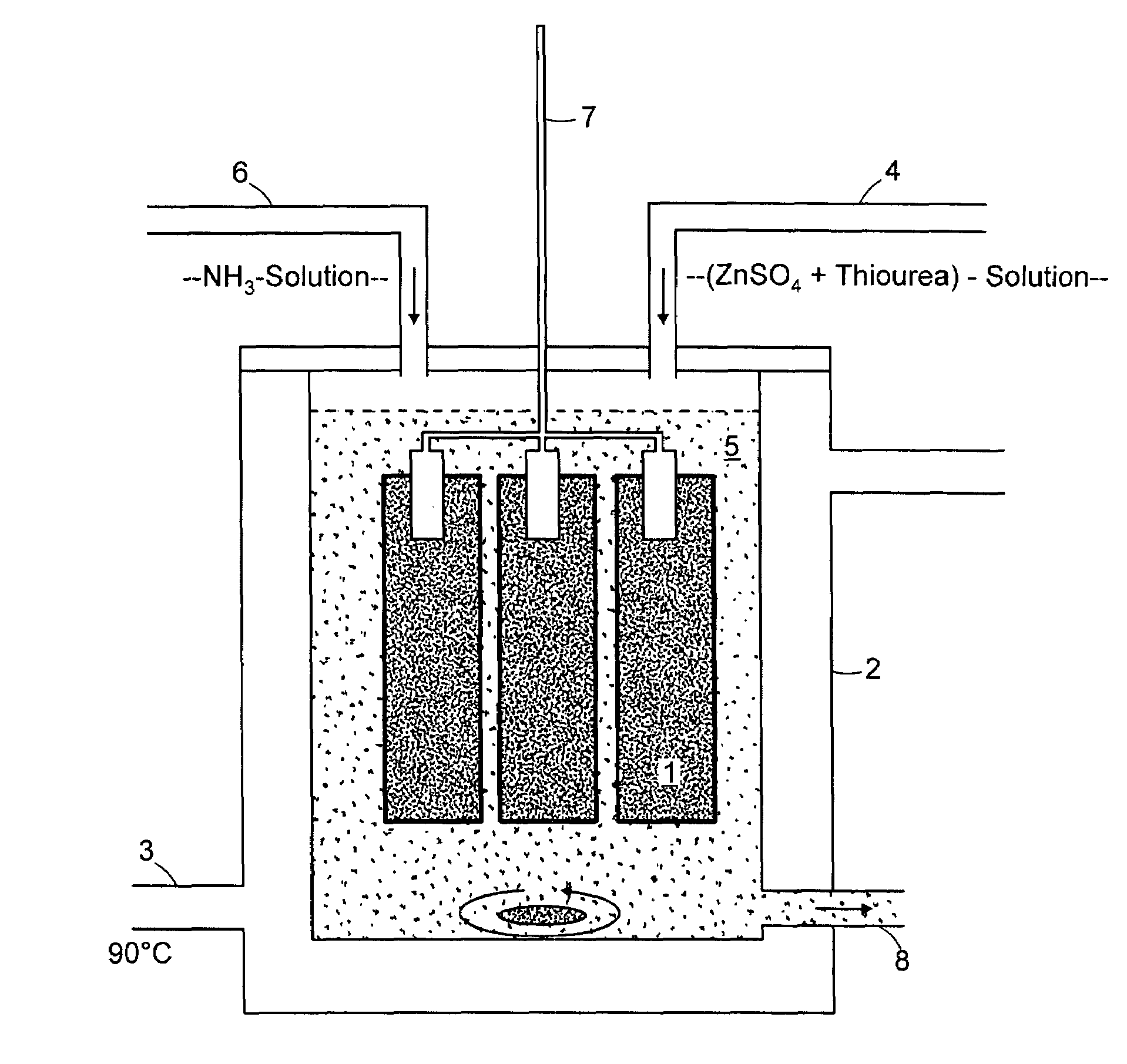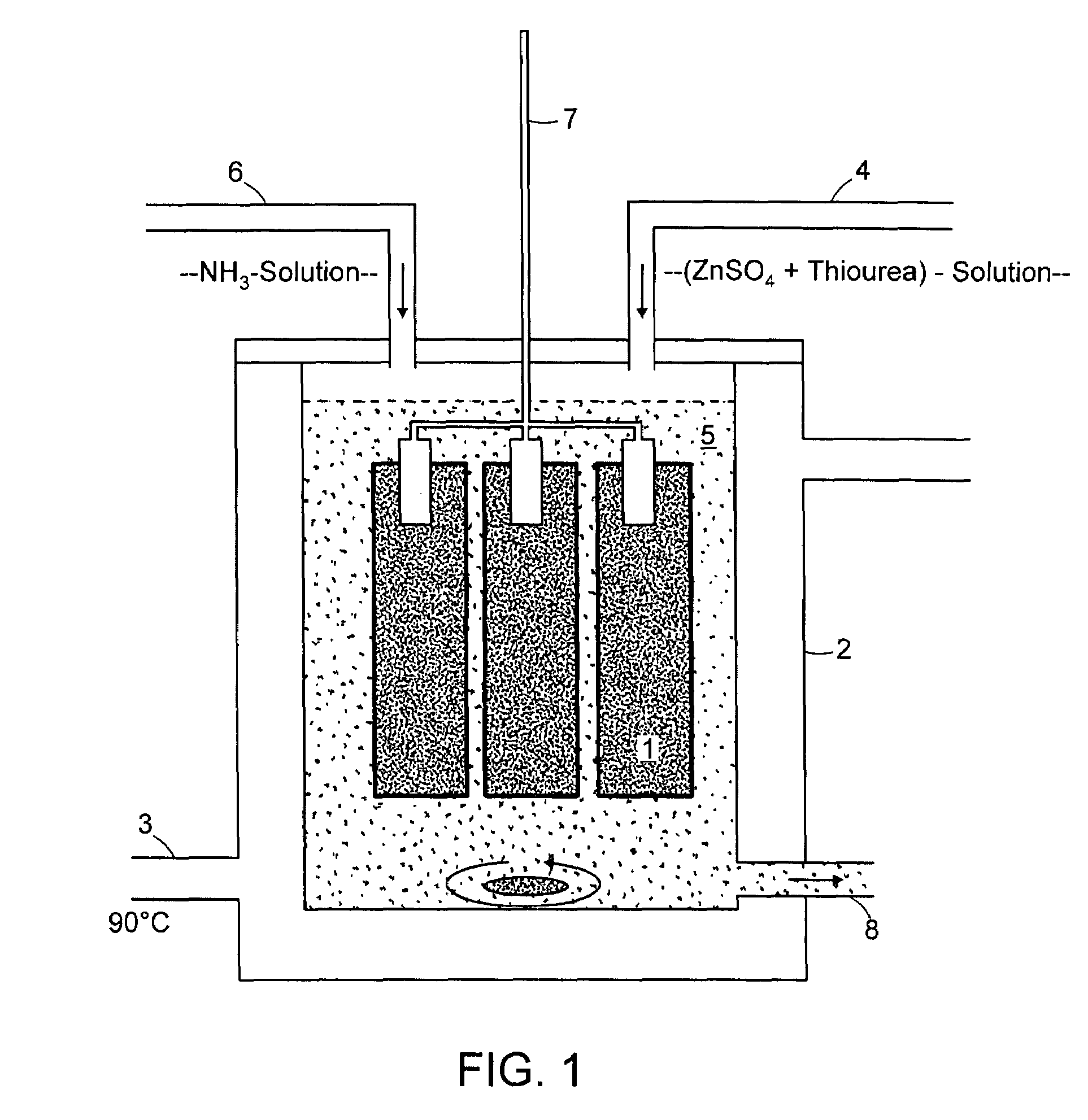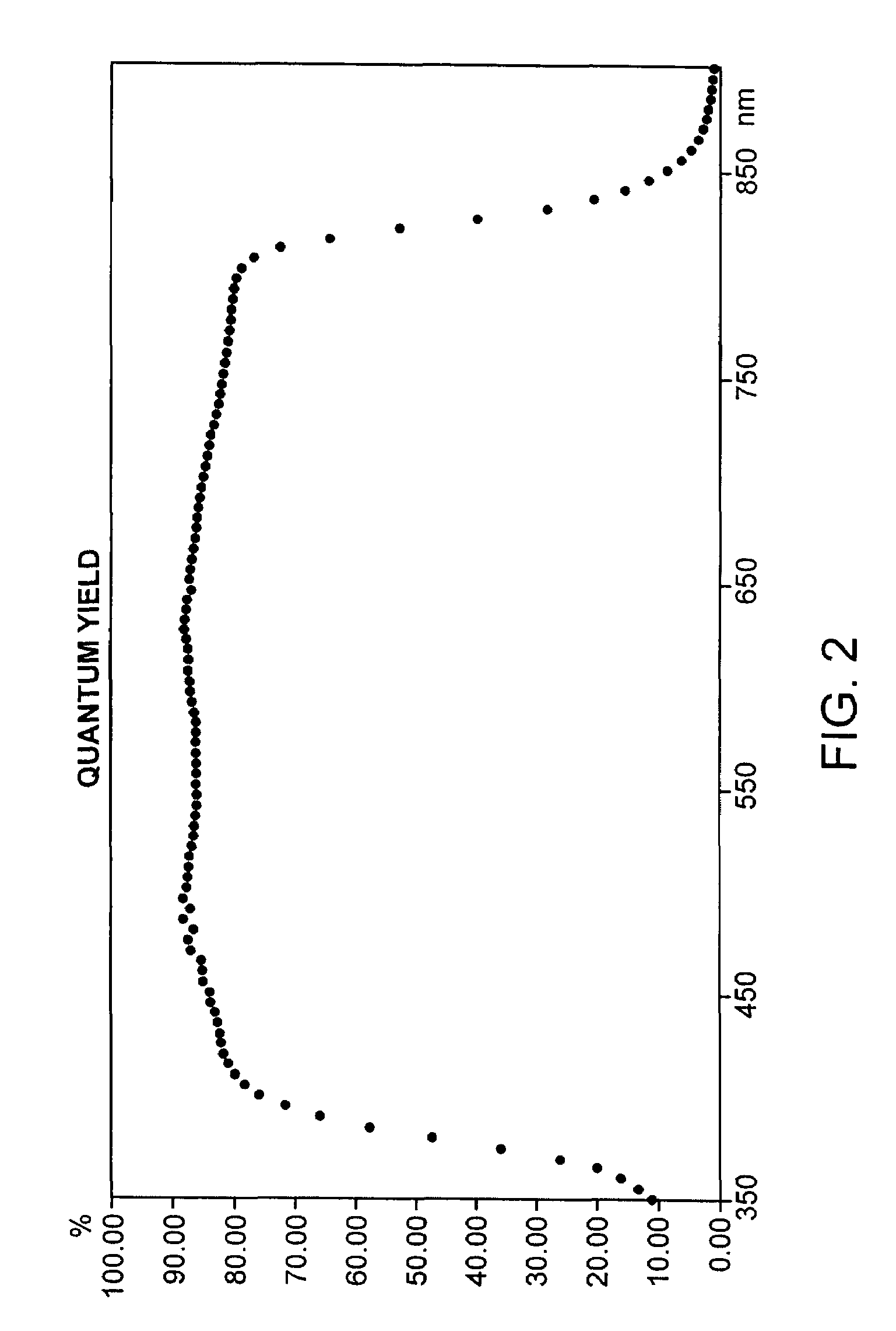Method of the application of a zinc sulfide buffer layer on a semiconductor substrate
a zinc sulfide and buffer layer technology, applied in the direction of electrolytic capacitors, liquid/solution decomposition chemical coatings, coatings, etc., can solve the problems of not much of an ecological advantage, zinc sulfide chemical bath deposition process has good deposition rate, and the equipment and time is less. , the effect of less complexity
- Summary
- Abstract
- Description
- Claims
- Application Information
AI Technical Summary
Benefits of technology
Problems solved by technology
Method used
Image
Examples
Embodiment Construction
[0029]The following layer structure was exemplarily chosen for a chalcopyrite thin-film solar cell (no module).
[0030]
Substrate:GlassRear Contact Layer:MolybdenumAbsorber:CuInS2Buffer Layer:ZnSWindow Layer:i-ZnO / ZnO:GaLight-side Contact:NiAl
[0031]For applying ZnS to chalcopyrite absorbers the samples 1 are stored in a solution of ammonia and water prior to the chemical bath deposition.
[0032]FIG. 1 depicts the structure of the test. A sample vessel 2 provided with a heater 3 is used.
[0033]The chemical bath depicted in FIG. 1 is prepared as follows:[0034]1) A hot solution (70-m90° C.) with 0.05 to 0.5 mol / l zinc sulfate and 0.2 to 1.5 mol / l thiourea is prepared with twice-distilled water (indicated by feed line 4).[0035]2) This solution is stirred for some time.[0036]3) NH3 solution (25%) is then added (indicated by feed line 6). A white precipitate can be observed at once; it is dissolved again by continuous stirring. A complete clear solution with a pH value of 10 to 11 results.[0037...
PUM
| Property | Measurement | Unit |
|---|---|---|
| temperature | aaaaa | aaaaa |
| thickness | aaaaa | aaaaa |
| temperature | aaaaa | aaaaa |
Abstract
Description
Claims
Application Information
 Login to View More
Login to View More - R&D
- Intellectual Property
- Life Sciences
- Materials
- Tech Scout
- Unparalleled Data Quality
- Higher Quality Content
- 60% Fewer Hallucinations
Browse by: Latest US Patents, China's latest patents, Technical Efficacy Thesaurus, Application Domain, Technology Topic, Popular Technical Reports.
© 2025 PatSnap. All rights reserved.Legal|Privacy policy|Modern Slavery Act Transparency Statement|Sitemap|About US| Contact US: help@patsnap.com



